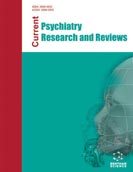
Abstract
Background: The development of mobile Internet technology has brought great changes and convenience in our daily life. However, it has also arisen a series of mental health problems, especially problematic mobile phone use (PMPU).
Objective: This study aimed to explore the relationship between social exclusion and PMPU among Chinese college students, as well as the mediating role of basic psychological needs satisfaction (BPNS).
Methods: We recruited a total of 340 participants (mean age 19.71, 44.7% males) from a university in China by convenience sampling. All of them completed the self-report tests of the Social Exclusion Scale, BPNS Scale and Mobile Phone Addiction Index Scale. Data analysis was performed in SPSS 23.0, using the PROCESS macro to examine the mediating effect.
Results: Social exclusion was significantly positively correlated with PMPU (r = 0.22, p < 0.001), and significantly negatively correlated with BPNS (r = -0.66, p < 0.001), and BPNS was significantly negatively correlated with PMPU (r = -0.24, p < 0.001). BPNS played a mediating role in the relationship between social exclusion and PMPU. In addition, autonomy needs and competence needs mediated the link of such a relationship, whereas the mediating role of relatedness needs was not significant.
Conclusion: Results showed that social exclusion was closely related to PMPU, and social exclusion affected PMPU through BPNS. These findings underline the important role of social relationship and BPNS on adolescents’ PMPU.
Graphical Abstract
[http://dx.doi.org/10.11114/ijsss.v8i3.4788]
[http://dx.doi.org/10.1556/2006.7.2018.49] [PMID: 29895183]
[http://dx.doi.org/10.1097/ADM.0000000000000425] [PMID: 29912726]
[http://dx.doi.org/10.12677/AP.2019.92046]
[http://dx.doi.org/10.1016/j.adolescence.2021.03.003] [PMID: 33813315]
[http://dx.doi.org/10.3724/SP.J.1042.2020.01836]
[http://dx.doi.org/10.1371/journal.pone.0163010]
[http://dx.doi.org/10.1080/17482790802078565]
[http://dx.doi.org/10.1111/apa.15714] [PMID: 33305437]
[http://dx.doi.org/10.1002/acp.3661]
[http://dx.doi.org/10.1016/j.ijpsycho.2017.06.003] [PMID: 28601652]
[http://dx.doi.org/10.1097/00024382-200610001-00089]
[http://dx.doi.org/10.1016/j.psychres.2018.12.040] [PMID: 30553099]
[http://dx.doi.org/10.16128/j.cnki.1005-3611.2017.06.038]
[http://dx.doi.org/10.4236/ojpm.2013.36055]
[http://dx.doi.org/10.1521/jscp.1990.9.2.221]
[http://dx.doi.org/10.4135/9781446249215.n21]
[http://dx.doi.org/10.1007/s12144-021-02012-y]
[http://dx.doi.org/10.1016/j.childyouth.2020.105113]
[http://dx.doi.org/10.1016/j.childyouth.2021.106248]
[http://dx.doi.org/10.1177/0146167209358882] [PMID: 20388870]
[http://dx.doi.org/10.5430/ijhe.v5n4p144]
[http://dx.doi.org/10.1016/j.paid.2018.07.007]
[http://dx.doi.org/10.1037/mot0000241]
[http://dx.doi.org/10.1037/a0030913] [PMID: 23205625]
[http://dx.doi.org/10.16128/j.cnki.1005-3611.2018.06.016]
[http://dx.doi.org/10.16128/j.cnki.1005-3611.2020.03.029]
[http://dx.doi.org/10.16128/j.cnki.1005-3611.2014.05.062]
[http://dx.doi.org/10.16187/j.cnki.issn1001-4918.2020.04.13]
[http://dx.doi.org/10.1023/A:1025007614869]
[http://dx.doi.org/10.1007/s12310-021-09436-8]
[http://dx.doi.org/10.2174/157340012803520522]
[http://dx.doi.org/10.3390/bs8080074] [PMID: 30110898]
[http://dx.doi.org/10.1016/j.chb.2014.01.024]
[http://dx.doi.org/10.1007/s12144-018-9956-x]
[http://dx.doi.org/10.1007/s11469-021-00506-1]
[http://dx.doi.org/10.16719/j.cnki.1671-6981.2009.06.031]
[http://dx.doi.org/10.1016/j.paid.2012.05.025]
[http://dx.doi.org/10.3390/ijerph17155305] [PMID: 32717969]
[http://dx.doi.org/10.12677/AP.2019.92042]
[http://dx.doi.org/10.1016/S0747-5632(00)00041-8]
[http://dx.doi.org/10.16835/j.cnki.1000-9817.2019.07.036]










